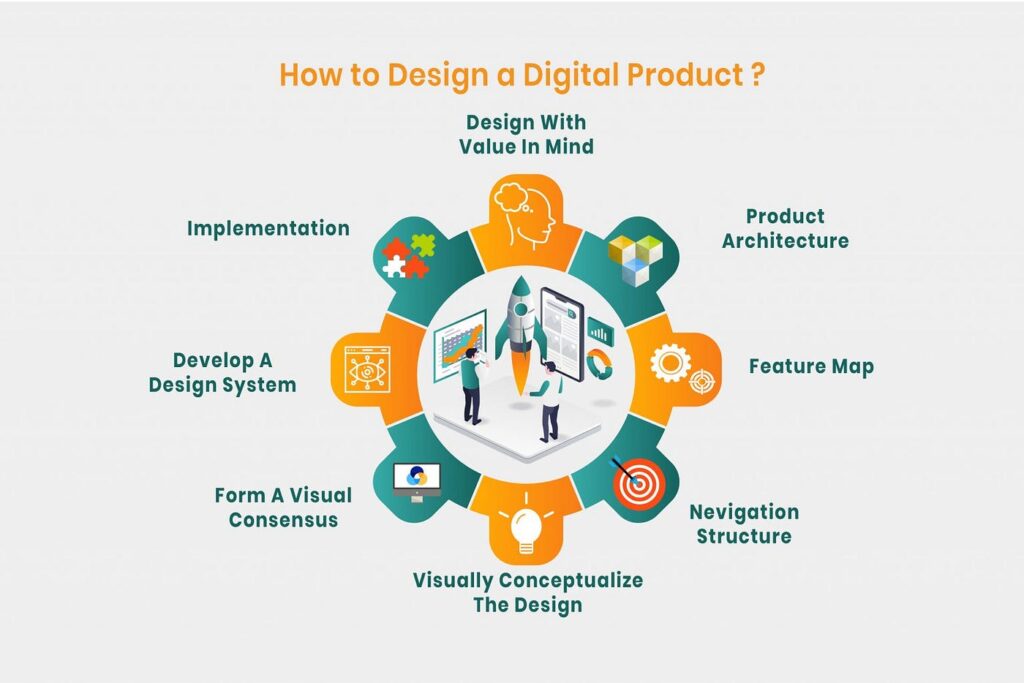In the world of digital product design, creating a successful product involves many different processes and disciplines. Among these, two critical aspects are system analysis and design (SAD) and user experience (UX) design. Both play pivotal roles, but there is often debate over which should come first. Should we start by understanding the system’s requirements and architecture, or should we begin by designing an optimal user experience? This article explores these two approaches to digital product design and provides insights into which should take precedence.
Understanding System Analysis and Design
System Analysis and Design (SAD):
SAD focuses on identifying and documenting a system’s requirements, functionality, and architecture. This involves understanding what the product needs to achieve, how it will function, and the technical specifications necessary for development. SAD includes analyzing existing systems, gathering requirements from stakeholders, designing the system’s architecture, and creating a roadmap for development.
Key Activities in SAD:
- Requirements Gathering: Collecting data from stakeholders, including clients, users, and other relevant parties, to understand what the product should accomplish.
- System Design: Defining the architecture, components, modules, interfaces, and data necessary to meet the specified requirements.
- Technical Specifications: Detailing the technologies, frameworks, and tools needed to build the product.
- Feasibility Analysis: Assessing the viability, cost, and risks associated with the project.
Benefits of Prioritizing SAD:
- Clear Understanding of Functional Requirements: Ensures all technical requirements are met before delving into the UX design process.
- Efficiency in Development: By clearly defining the technical architecture and system requirements, developers can work more efficiently, reducing potential rework.
- Risk Mitigation: Identifies potential risks early in the development cycle, allowing for proactive solutions.
Understanding UX Design
User Experience (UX) Design:
UX design centers around creating a meaningful and relevant experience for users. It involves understanding users’ needs, behaviors, and pain points and designing a product that provides value and ease of use. UX design encompasses a variety of activities, including user research, persona creation, wireframing, prototyping, and usability testing.
Key Activities in UX Design:
- User Research: Understanding who the users are, their needs, pain points, and how they will interact with the product.
- Personas and User Journeys: Creating user personas and mapping out their journey to ensure the product meets their expectations.
- Wireframing and Prototyping: Designing the layout, structure, and flow of the product to ensure it is intuitive and user-friendly.
- Usability Testing: Gathering feedback from real users to identify any issues or areas for improvement.
Benefits of Prioritizing UX Design:
- User-Centric Approach: Puts the user at the center of the design process, ensuring the final product is intuitive and enjoyable to use.
- Improved Satisfaction and Adoption: A well-designed user experience increases user satisfaction, engagement, and product adoption.
- Flexibility in Design Iteration: Early UX design allows for rapid prototyping and iteration, which can save time and resources.
What Comes First: SAD or UX Design?
Deciding whether to begin with SAD or UX design depends on several factors, such as the project’s scope, the team’s composition, stakeholder priorities, and the product’s complexity. However, the most effective approach is often to integrate both processes simultaneously.
SAD First, Then UX Design: In some cases, starting with SAD is beneficial, especially when the product is technically complex, or there are strict regulatory or compliance requirements. By defining the system’s architecture, constraints, and technical requirements upfront, the team can ensure that the UX design is feasible within these parameters.
UX Design First, Then SAD: In other cases, prioritizing UX design is more effective, particularly when the product’s success hinges on the user experience. If the project involves a consumer-facing product where user engagement, retention, and satisfaction are primary goals, focusing on UX design can help identify user needs and expectations early.
A Collaborative, Integrated Approach:For most digital product design projects, a collaborative, integrated approach that combines SAD and UX design is the most effective. By working on both concurrently, teams can ensure that the system’s technical foundation aligns with user needs and expectations. This method allows for iterative feedback loops between the system architecture and the UX design, promoting a balanced product that meets both functional and user-centric goals.
The Role of Agile Methodologies
Agile methodologies, such as Scrum or Kanban, support a collaborative approach by breaking down the project into smaller, manageable iterations or sprints. This allows for continuous feedback, testing, and refinement of both the system and the UX design.
Benefits of Agile in Digital Product Design:
- Rapid Iteration: Frequent iterations ensure that both SAD and UX design are constantly evolving based on user feedback and technical constraints.
- Flexibility and Adaptability: Agile allows teams to pivot and make changes to the design or system architecture without significant delays or costs.
- Enhanced Collaboration: Agile fosters a cross-functional team environment where UX designers, developers, and system analysts work together seamlessly.
Conclusion: Finding the Balance in Digital Product Design
Ultimately, the question of whether to prioritize system analysis and design or UX design in digital product development depends on the specific context of the project. While some projects may benefit from a clear emphasis on one over the other, a collaborative, integrated approach is often the best path forward.
By recognizing the unique contributions of both SAD and UX design, teams can create digital products that are not only technically sound but also user-friendly and engaging. The key lies in maintaining open communication, embracing an agile mindset, and being flexible enough to adapt to the project’s evolving needs. In this way, digital product design becomes a harmonious blend of both technical and human-centered perspectives, leading to a product that truly resonates with its users. For Information click the link 1st-street.




